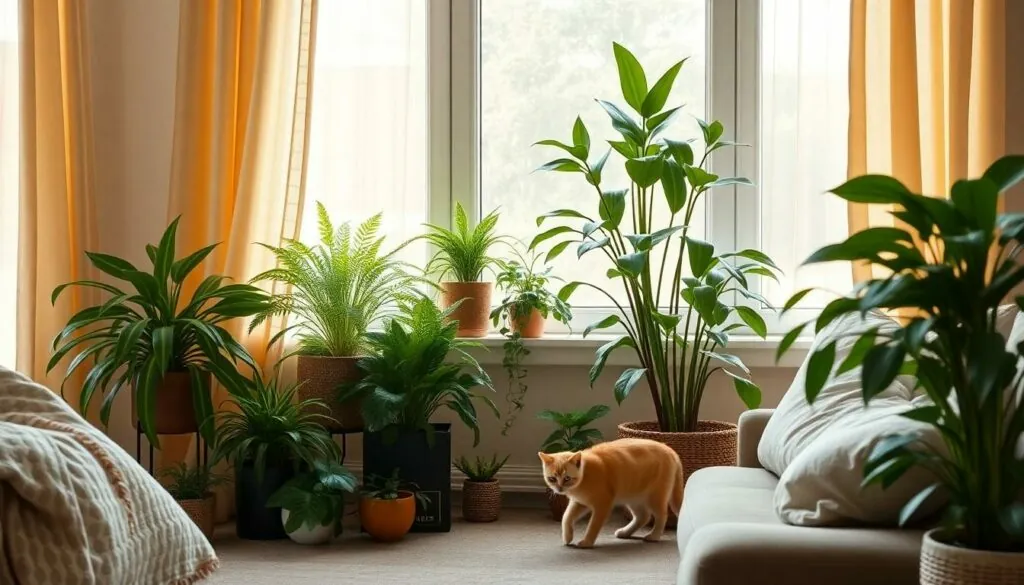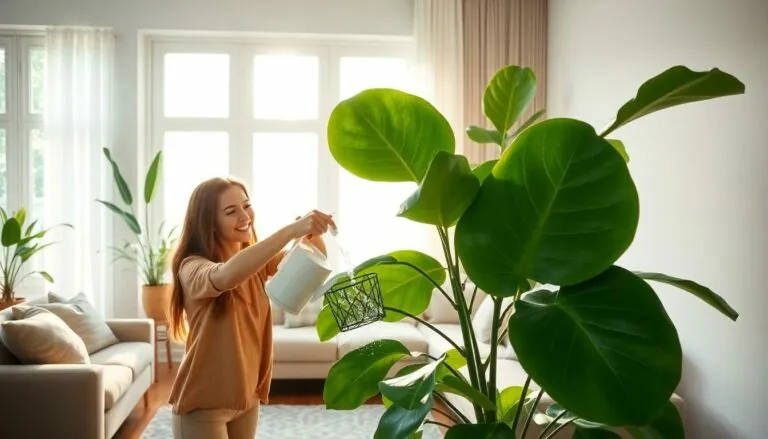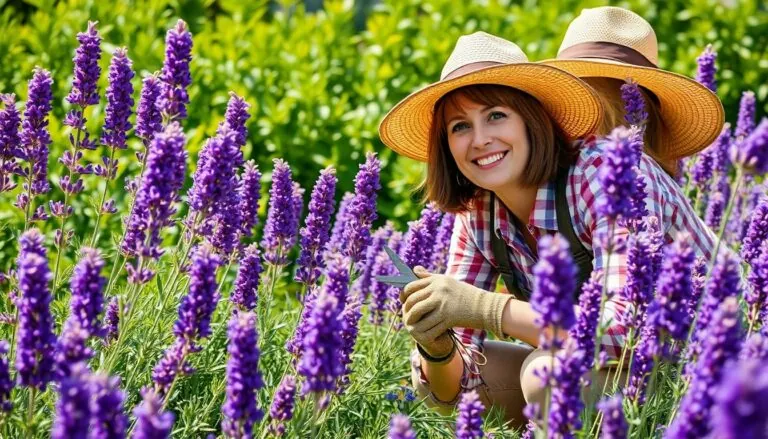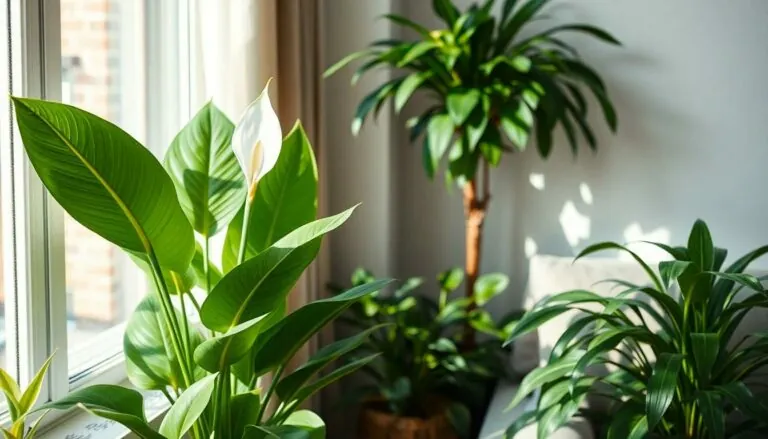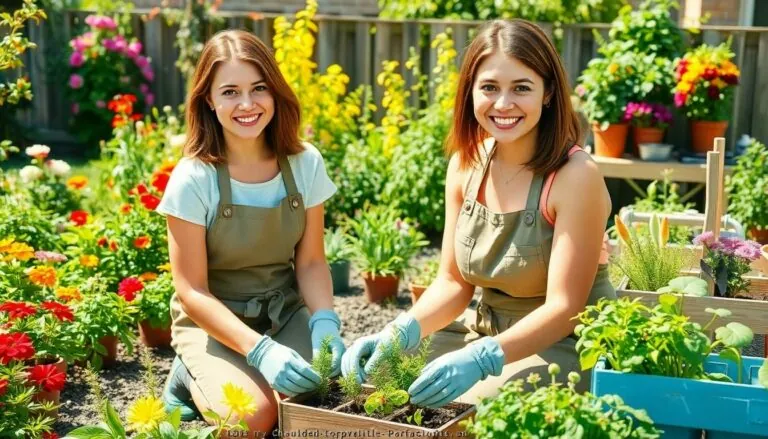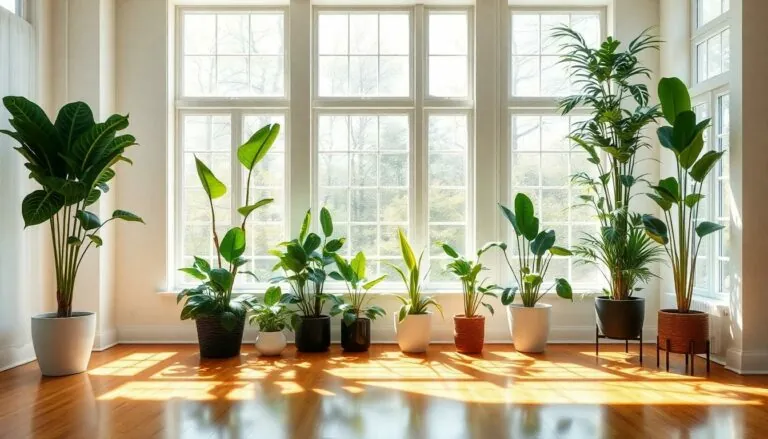Table of Contents
ToggleBringing greenery into a home can transform any space from drab to fab, but for cat owners, it’s a bit like walking a tightrope. Cats are curious creatures, and their penchant for nibbling on houseplants can lead to some serious trouble. Luckily, there’s a solution that allows both plants and pets to coexist in harmony.
Understanding Low Light Indoor Plants
Low light indoor plants thrive in limited sunlight, making them ideal for homes with shaded areas. Their ability to flourish in low-light conditions allows pet owners to enjoy greenery without risking their cats’ health.
Benefits of Low Light Indoor Plants
Low light indoor plants enhance indoor air quality, filtering pollutants while producing oxygen. They also add aesthetic appeal, providing vibrant greens and unique textures to living spaces. Besides, these plants require minimal maintenance, making care easy for busy lifestyles. Their adaptability means they suit a variety of environments, from small apartments to larger homes. Bright spots of greenery can uplift moods, creating a calm and pleasing atmosphere.
Importance of Safety for Cats
Choosing pet-safe plants matters for feline health. Many common houseplants can be toxic to cats, leading to gastrointestinal distress or more severe reactions. Low light options provide a safe alternative, ensuring pets can explore without harmful consequences. Research confirms several non-toxic plants that thrive indoors, allowing for a harmonious household. Knowing which plants are safe helps pet owners make informed choices, combining the beauty of nature with the well-being of their animals.
Popular Low Light Indoor Plants Safe for Cats
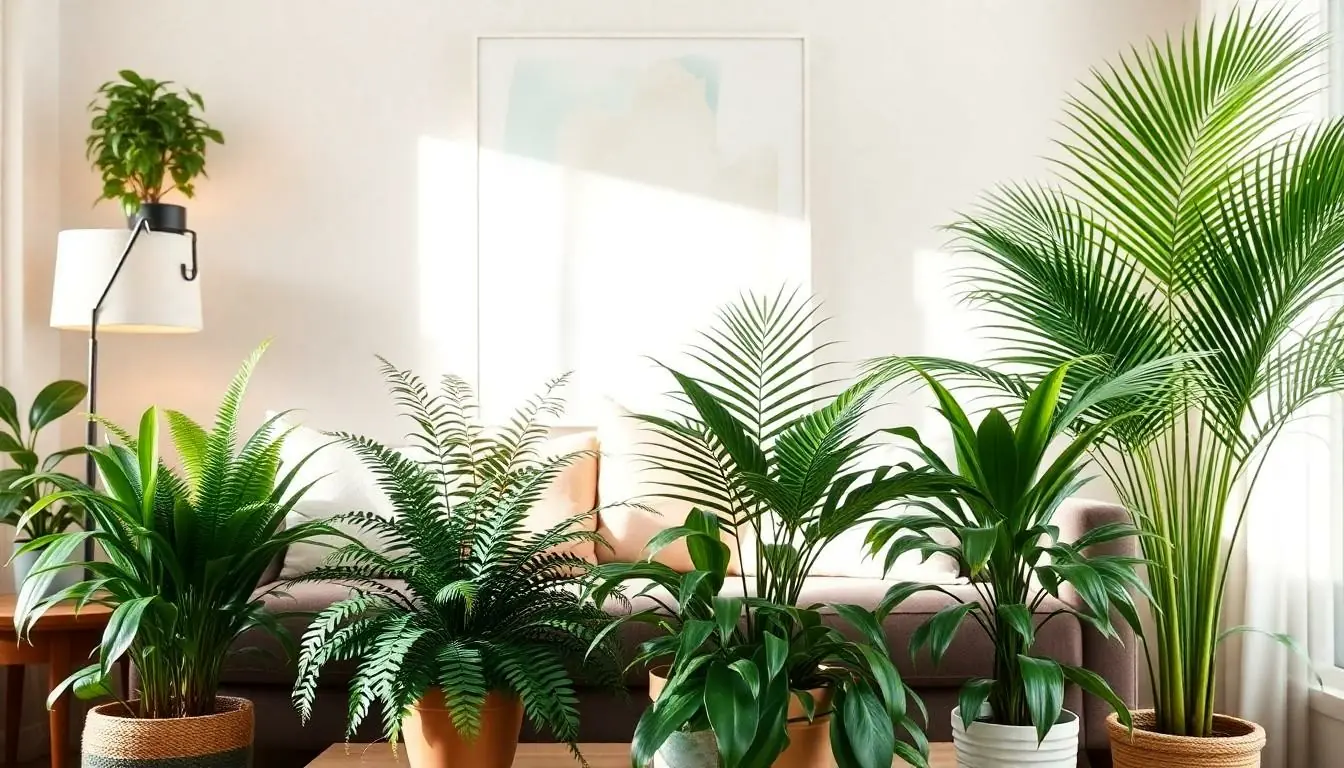
Many low light indoor plants thrive in shaded environments and pose no risk to cats. These plants create a safe, inviting atmosphere for pet owners while adding greenery to homes.
Spider Plant
Spider plants are resilient and can flourish in low light. These plants feature arching leaves with green and white stripes, making them visually appealing. Spider plants help purify indoor air and are non-toxic to cats. They’re easy to care for, requiring occasional watering and indirect sunlight.
Boston Fern
Boston ferns thrive in low light and high humidity. Their lush, feathery fronds create a vibrant touch to any room. Boston ferns also enhance indoor air quality by filtering toxins. Safe for cats, these plants prefer to stay moist, requiring regular watering and misting.
Parlor Palm
Parlor palms offer a classic look with their elegant fronds. Known for their slow growth, these plants adapt well to low light settings. Parlor palms are safe for cats and contribute to a calming indoor atmosphere. They generally need watering when the soil dries, and they’re forgiving of neglect.
Areca Palm
Areca palms stand out with their feathery, arching leaves. These plants grow well in low light and bring a tropical vibe indoors. Areca palms are also safe for cats and act as natural air purifiers. They benefit from regular watering, but it’s essential to let the top inch of soil dry out between waterings.
Care Tips for Low Light Indoor Plants
Caring for low light indoor plants requires attention to specific needs to ensure both their health and safety for pets. Following these tips helps create a thriving environment.
Watering Requirements
Watering low light indoor plants depends on the type of plant and its environment. Overwatering poses risks, leading to root rot. It’s crucial to check the top inch of soil; if dry, water until it drains. For example, Spider Plants prefer slightly moist soil, while Boston Ferns require regular watering to maintain humidity. Parlor Palms benefit from consistency, needing water only when the soil feels dry. Establishing a routine contributes to healthier plants without making them susceptible to disease.
Ideal Soil and Fertilization
Selecting the right soil mix promotes healthy growth in low light plants. A well-draining potting mixture works best, allowing roots to breathe while retaining some moisture. Ferns thrive in rich, organic soil, while palms prefer a lighter, more aerated mix. Fertilization should take place during the growing season with a diluted, balanced fertilizer every four to six weeks. This simple step encourages lush foliage without overwhelming the plant.
Placement and Light Considerations
Placement significantly influences the growth of low light plants. Despite being tolerant of less light, they still need some indirect sunlight. Positioning plants near a north or east-facing window often yields the best results. Spider Plants adapt easily to various spaces and can tolerate fluorescent light, while Boston Ferns thrive in higher humidity environments. Avoid direct sunlight, as this can scorch leaves. Observing each plant’s response to its environment helps in finding the perfect spot for them to flourish.
Choosing low light indoor plants that are safe for cats allows pet owners to enjoy the beauty of greenery without worry. By selecting non-toxic varieties like Spider Plants and Boston Ferns, they create a harmonious living space where pets can roam freely. These plants not only enhance the aesthetic appeal of homes but also contribute to better air quality with minimal maintenance.
With the right care tips and placement strategies, these resilient plants can thrive in various indoor environments. Pet owners can confidently cultivate a lush atmosphere that supports both their love for nature and the safety of their feline companions.

